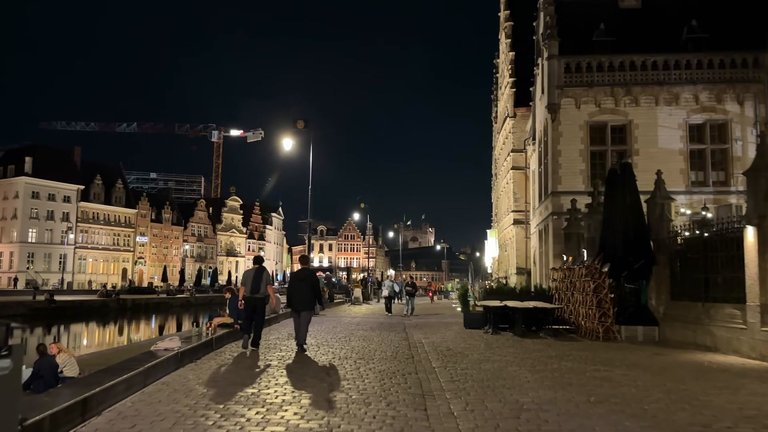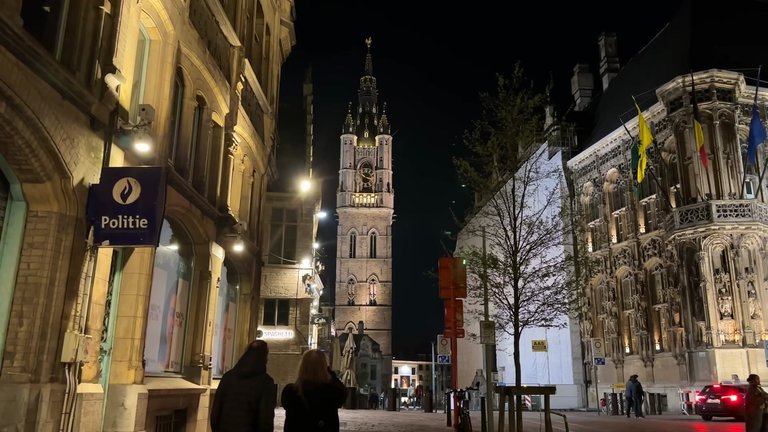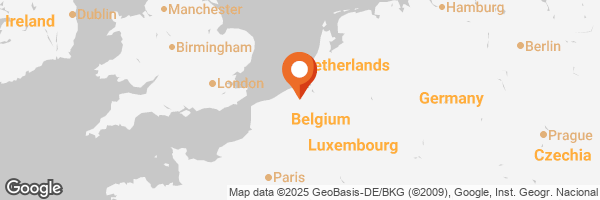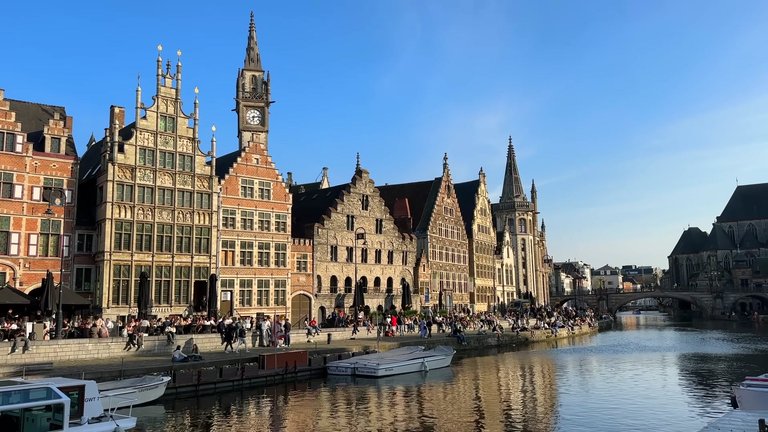
Hello dear travel lovers. During my visit to Belgium, besides Bruges I also visited Ghent. I think this is the best city to start discovering Belgium because it was this city that made me fall in love with the country. The beauty of the central streets of Ghent is in no way inferior to Belgium's favorite, Bruges. The only difference is that there are fewer tourists here, prices are more reasonable and most importantly the city feels really alive. Every Friday locals gather at the main market square. They spend the day cycling around the city. In the evening they come to the riverside and enjoy the view.
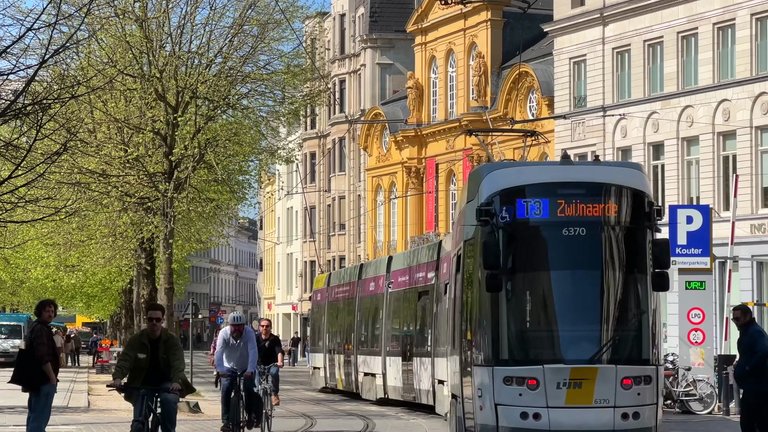
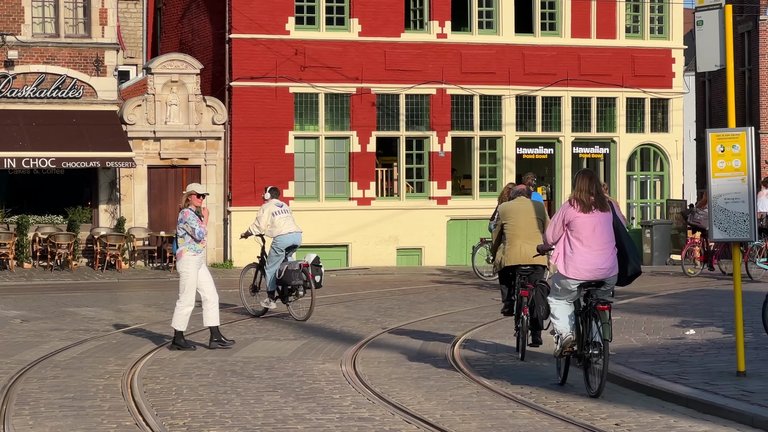
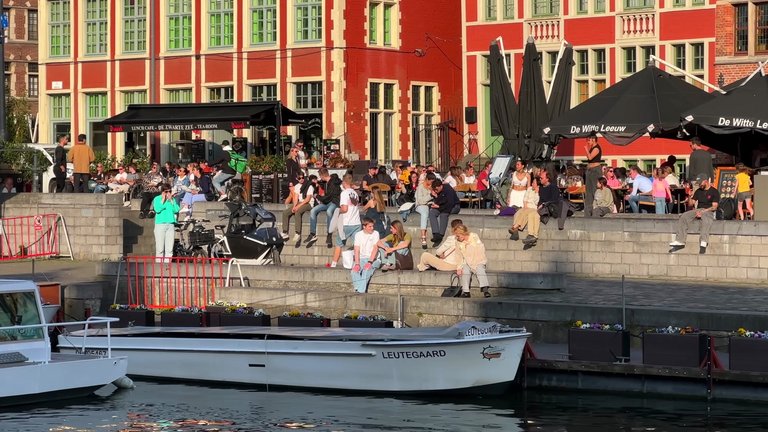
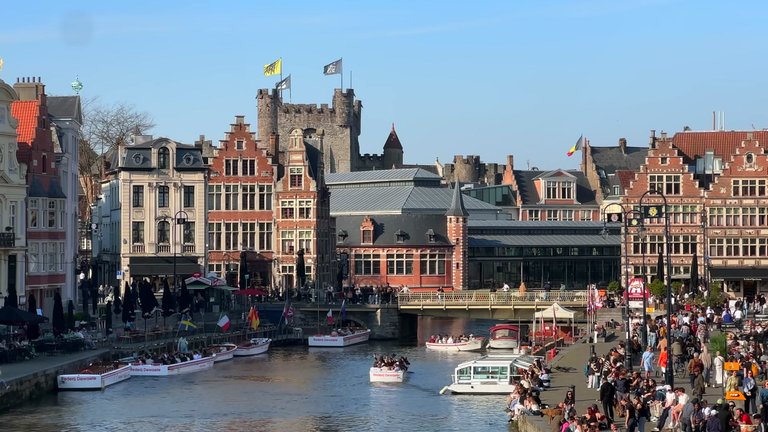
I am sure most of you have never even thought of coming here.When I said I was going to Ghent, most of my friends asked me where that was. Ghent is the capital of East Flanders and has a population of 260 thousand. It was founded at the point where two rivers, the Leie and the Scheldt meet. Probably in Celtic times this area was called the place where the rivers meet and over time this became Ghent.
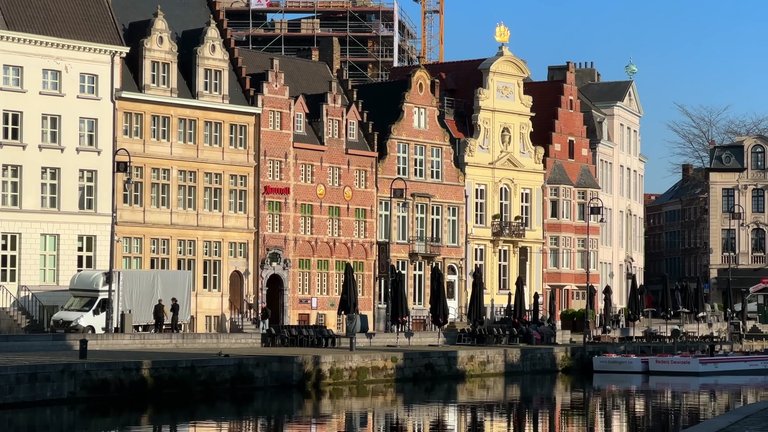
Ghent is almost the same distance from other cities competing for tourists attention. You can reach Bruges, Antwerp or Brussels in less than an hour by train. You can also come by bus. But of course, the most popular way is by train.
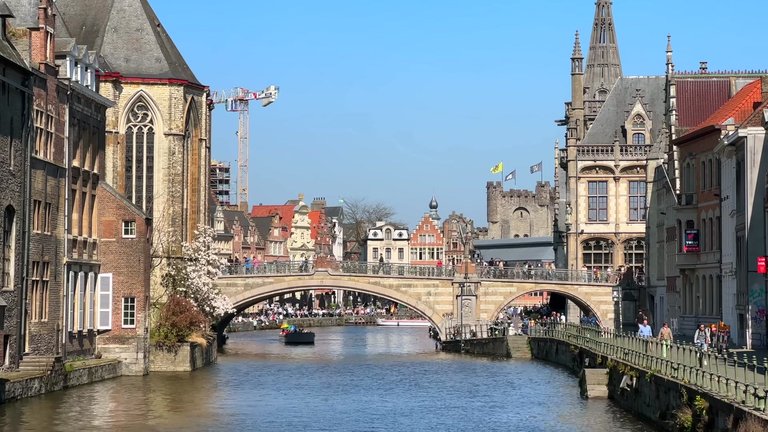
Ghent's main train station was built for the 1913 World's fair. The city prepared for this fair for a long time and the station project was one of the most important parts of this preparation. That is why you should definitely take a look at the lobby and the exterior of the building before you leave the platform.
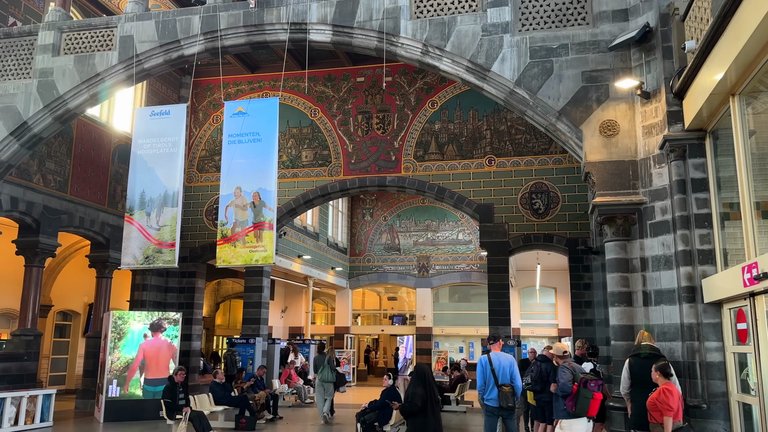
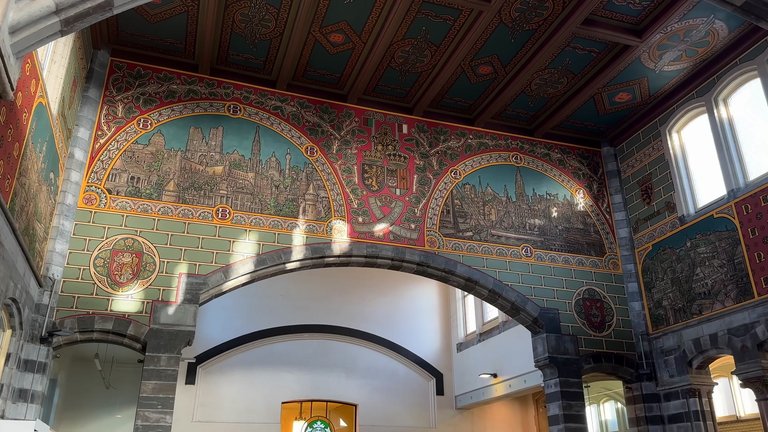
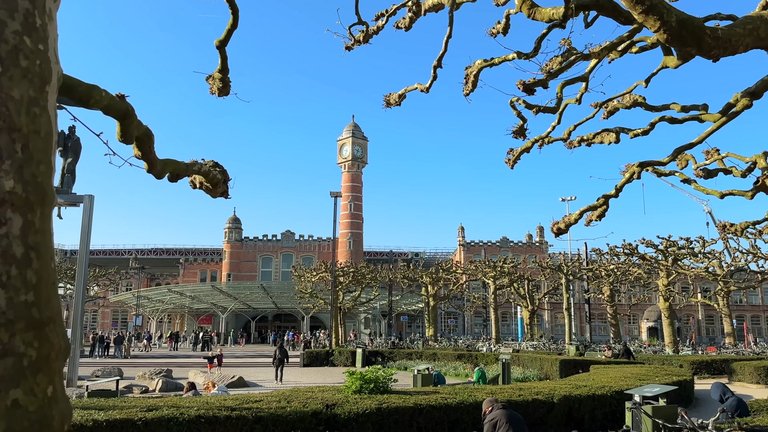
As soon as we left the station, we came to a pedestrian square surrounded by a large bicycle parking area. After just a few steps, I realized how popular bicycles are here. This is actually great because if there were as many cars as bikes, there would be no place to park them all. There are probably thousands of bikes here. But this also causes some problems. For example, how can you tell which bike has been here for a week, which for a month and which for years I think this is a real issue. I must also say that it does not look very nice. Maybe if part of it was placed underground and used for a small fee, it would be better. This way, the parking time could be monitored. They could see who leaves their bike for too long without paying and maybe even remove the bike. Still as soon as you leave the train station, you realize that bicycles are the most common means of transportation here. But I should also mention that trams work here very well, fast, quiet and efficient. You can use them too.
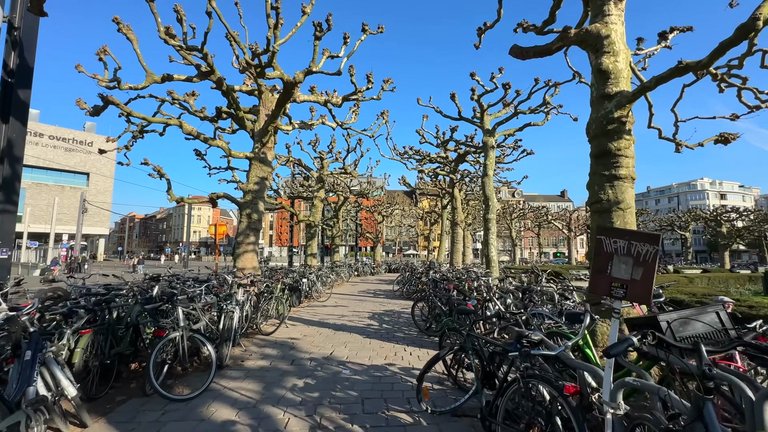
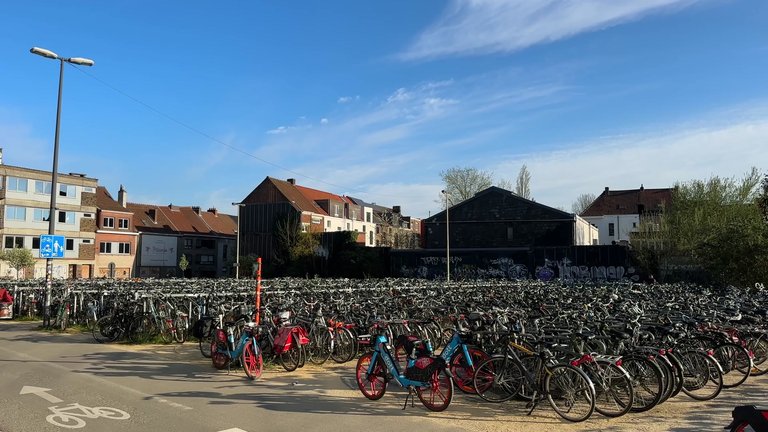
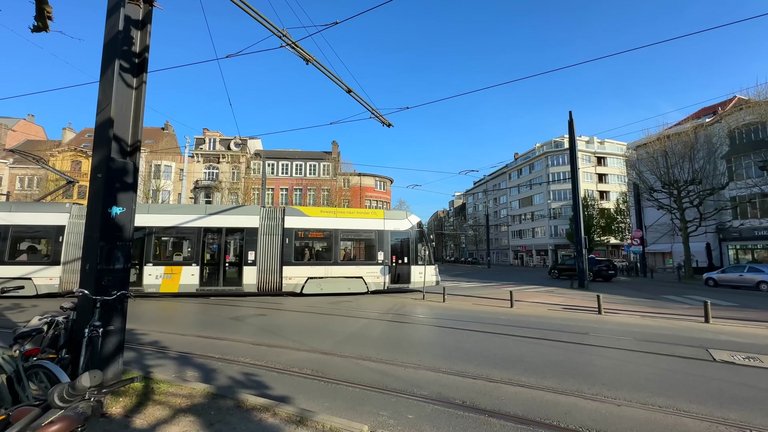
One more important note. If you come to Ghent with a suitcase, it is not so easy to walk to the hotel. Belgium is a model country in modern urbanism and accessibility. But here, the streets are full of stones and cobblestones. So dragging a suitcase is quite difficult. The best thing is to take a tram or bus first and then walk.
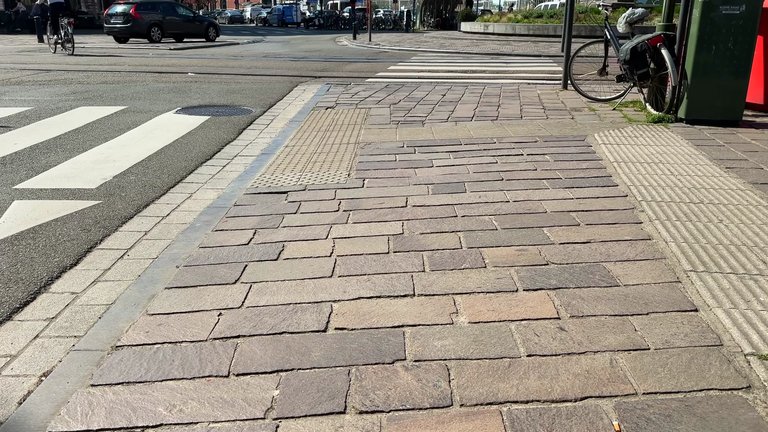
I arrived at the most fascinating place in Ghent, Graslei. I could not get enough of looking at this riverside. Every evening, both tourists and locals gather here. It is always crowded, lively and unbelievably beautiful. In the past, this used to be a busy port, full of trade activity. Workers loaded and unloaded grain and foreign goods onto ships. You can still see traces of those times in the magnificent buildings of the Belgian guilds.
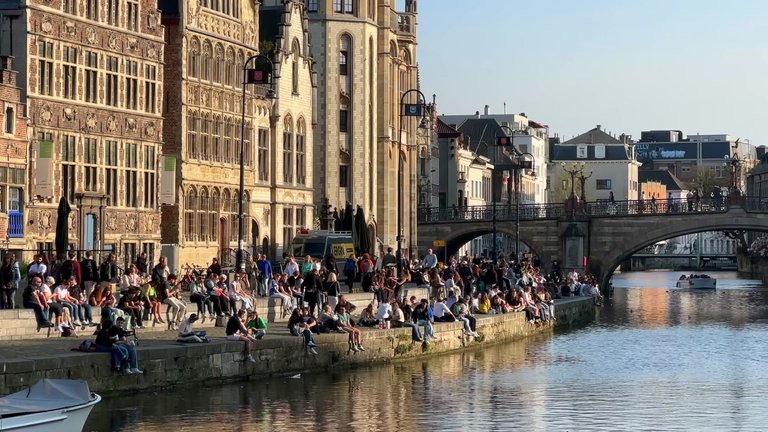
For example, the building of the captains guild from the fifteenth century. These sailors played an important role in the city's trade and river transport on the Leie. They had the right of free travel in Flanders and were the only ones allowed to navigate Ghent's inland waters. If there were free captains, there were also dependent captains. Their guild was in building number seven on the opposite bank. These captains worked for others and delivered goods to the free captains outside the city.
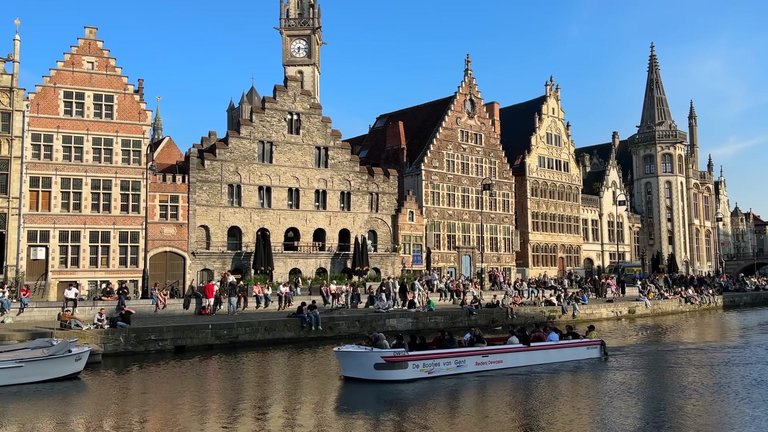

As we walked along Graslei, we passed the building of the grain traders guild. Grain used to be weighed here, then taxes were paid at the customs house. After that the goods were sent to the old warehouse. This is the oldest building on the shore. It served as a grain storehouse for six hundred years. Then comes the grain traders' building again and then the grand building of the Angel guild. In the fifteenth century, this place was the trade center for beer merchants.
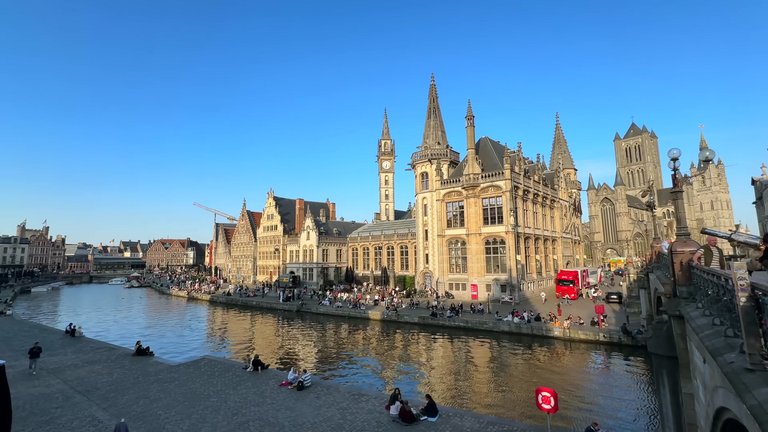
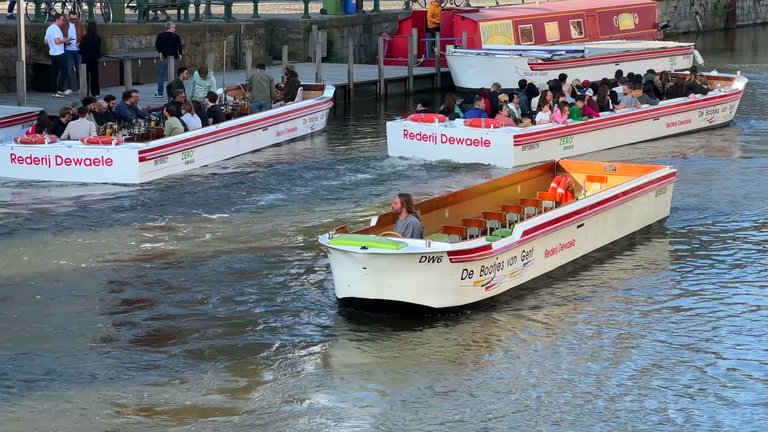
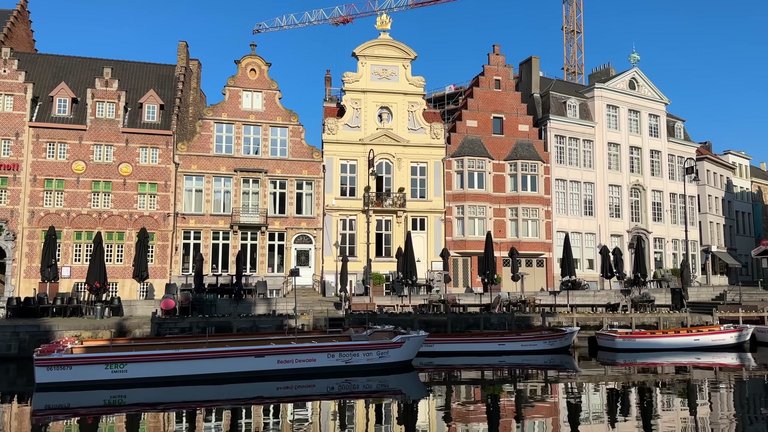
Every building in this area has its own story. But it is worth knowing that a little over a hundred years ago, this riverside did not look as impressive as it does today. All the buildings were restored for the 1913 World's Fair. Today, instead of sailors, it is tourists who examine the symbols on the buildings. Some of them reveal real history but it takes a curious eye and attention to detail.
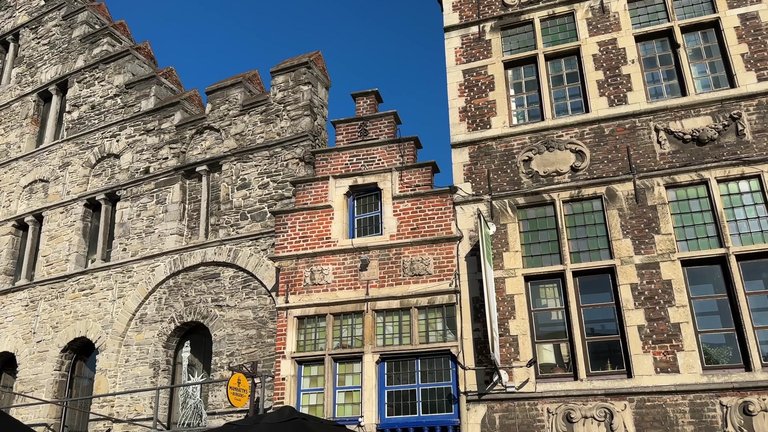
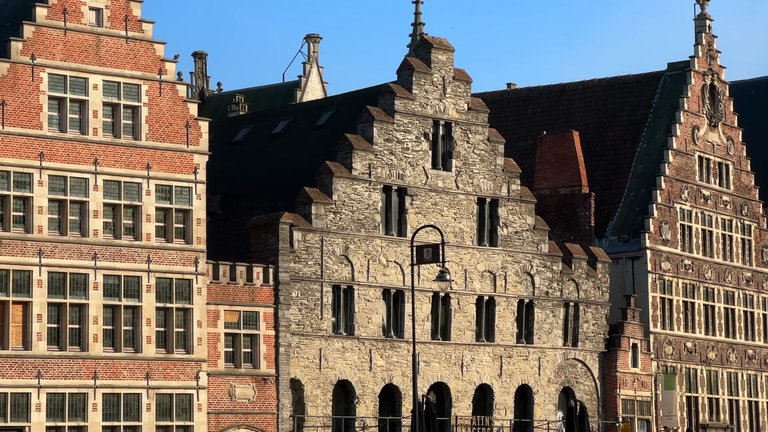
While walking around the city center of Ghent, we often ended up by the water, walking along the banks, taking photos on pedestrian bridges and watching tourist boats pass through the canals. Just like in Bruges, I suggest you see the city from a different angle. If you are with friends, you can rent your own boat and feel like the free captains. If you are traveling alone or as a couple, you can join the classic tourist boat tours. But this is quite ordinary and a bit boring. I think renting a canoe offers a completely different experience. You can go wherever you want, for as long as you want. Most importantly, you can explore in your own way. And yes, the city looks absolutely stunning from the water. Many historical buildings create a totally different impression when seen from the riverside.
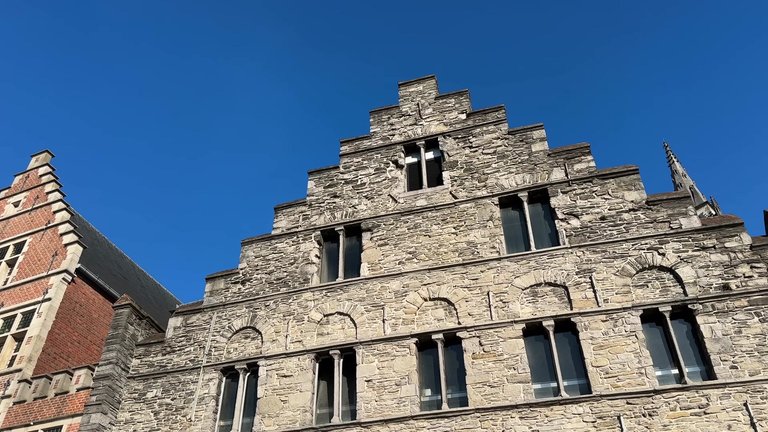
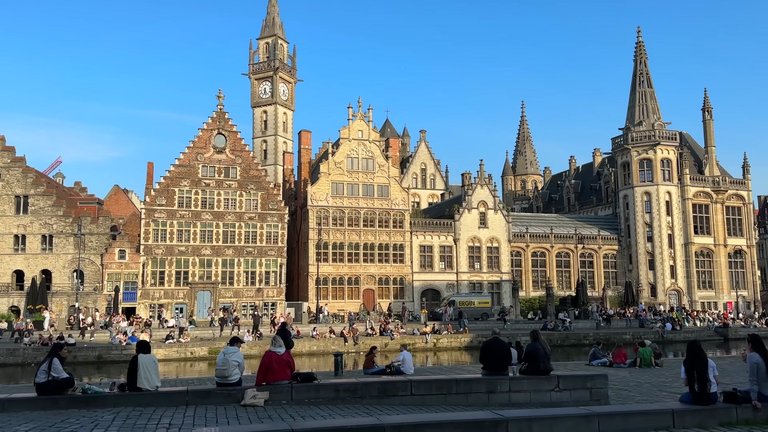
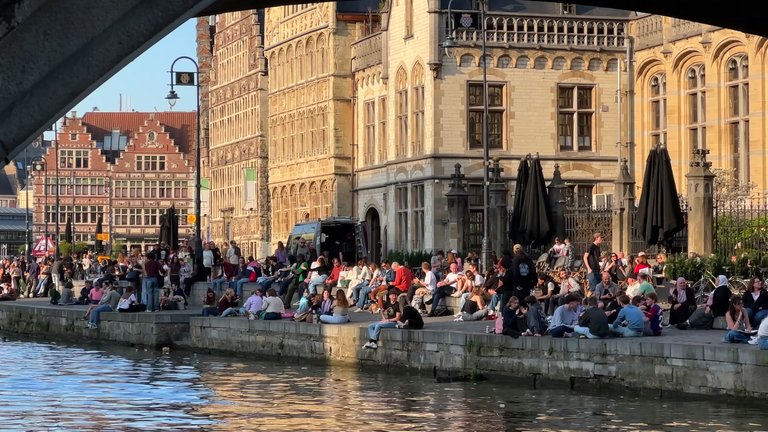
A good example is the Castle of the Counts of Flanders. Gravensteen was built at the end of the tenth century and is the only medieval castle in Flanders that has preserved its original defensive structure. Until the fifteenth century, it was the residence of the counts. Later it served as the Mint of Ghent, the High Court of Flanders, the Council of Flanders and even as a prison. But after the council abandoned the castle, a textile factory operated here throughout the nineteenth century. So in a way, it really was just a factory. But when tourists' interest grew at the beginning of the last century, restoration work began.
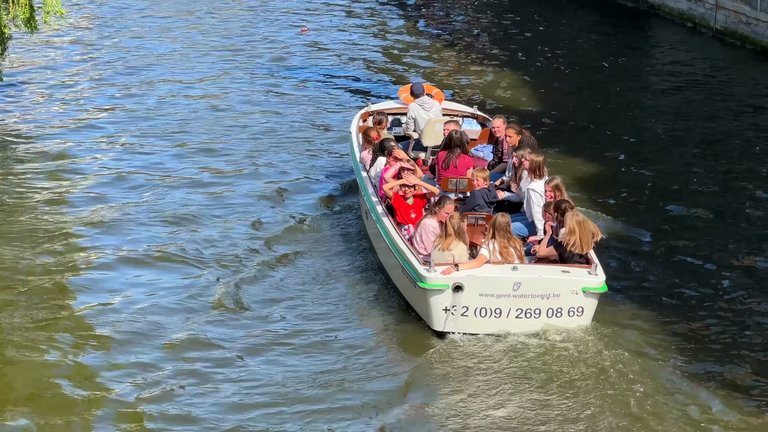
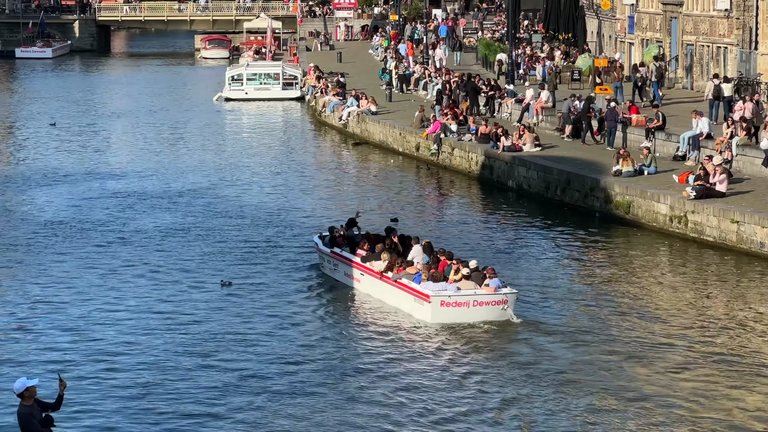
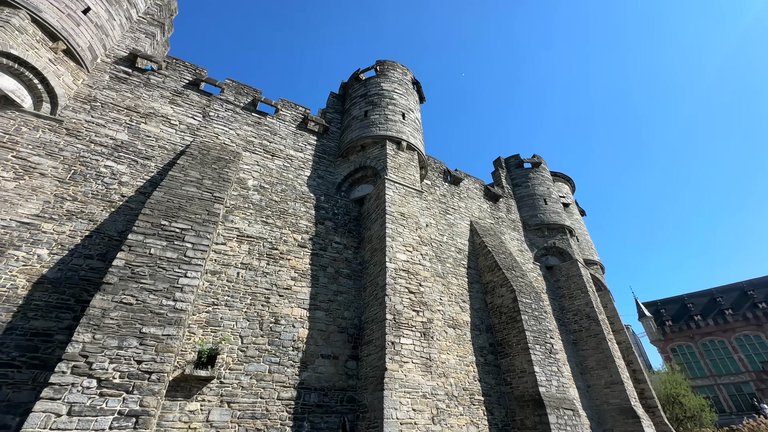
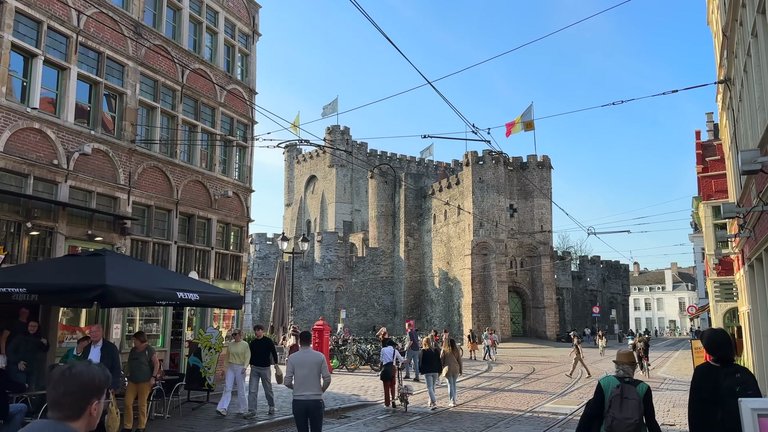
We happened to come across the famous Friday market of Ghent. This is the city's largest trading square. It is a very wide area and everything is sold here, clothes, food, even flowers. As far as I know, prices are quite reasonable. You can even find nice bouquets for two euros. Of course, there are ones for fifteen euros too but in general, it is affordable. You could buy flowers for your loved one every day. Or at least every Friday.
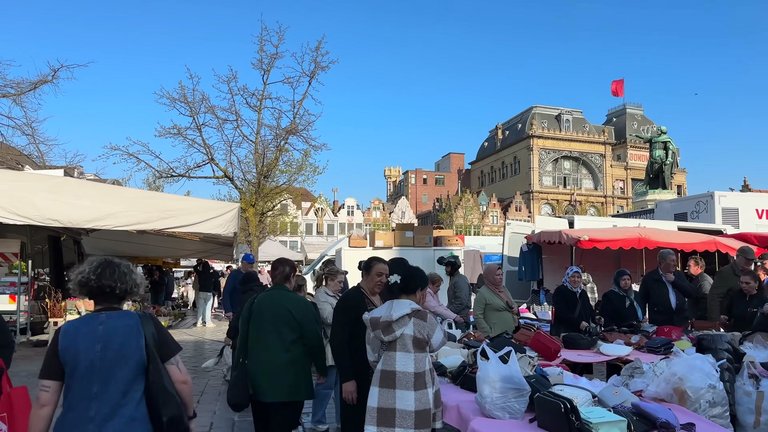
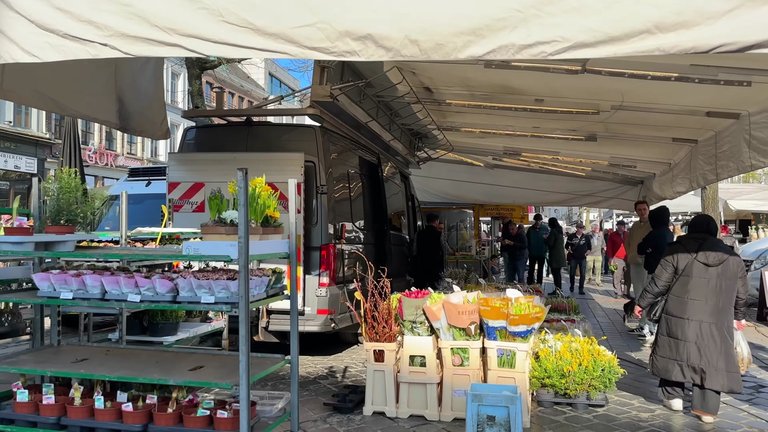
Pastries and different baked goods are also sold here. Of course, Belgium is famous for its sweets, especially its waffles. They also sell fish and seafood here. The crowd was quite large and it seemed like they were all locals because tourists had not yet arrived. It was around nine in the morning. They even sell coffee here. Then we walked toward the square. I do not know how it is on weekdays but on Fridays it is always like this. Because the Friday market has always been held here since ancient times. This tradition is still alive and embraced by the locals.
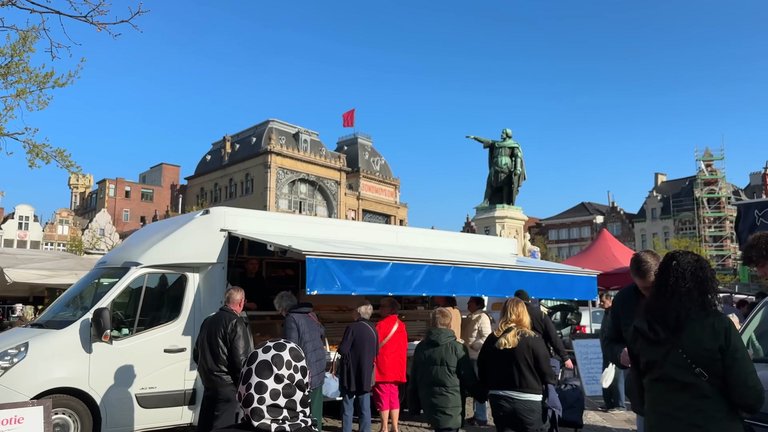
Right in the middle of the square is the statue of one of the important figures in the city’s history, Jacob van Artevelde, born in Ghent. In the fourteenth century, he ruled the city during the Hundred Years War. Today, while walking through the center of the city, we see rare traces of the golden ages and especially the restorations done in the last century.
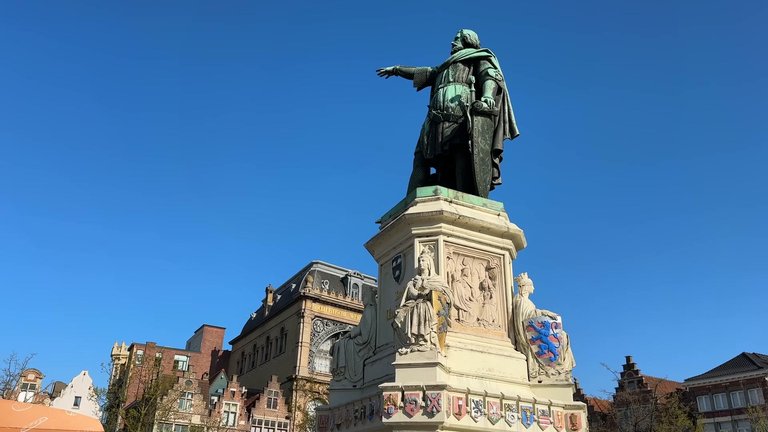
We decided that taking a boat tour was a good idea. You can only see the magnificent facades and the sunlit views from the water.
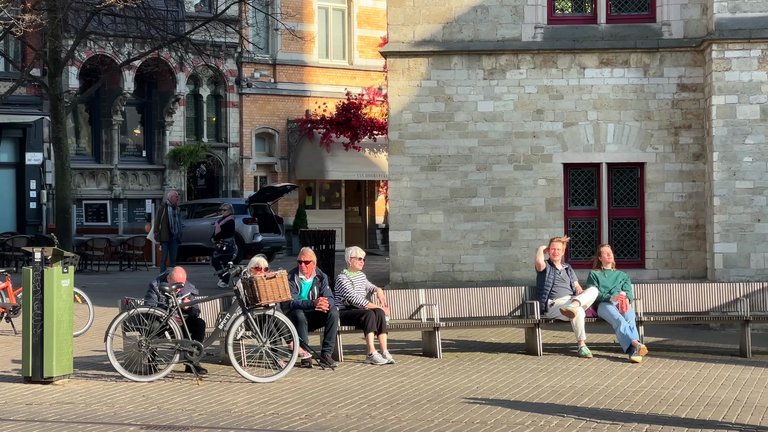
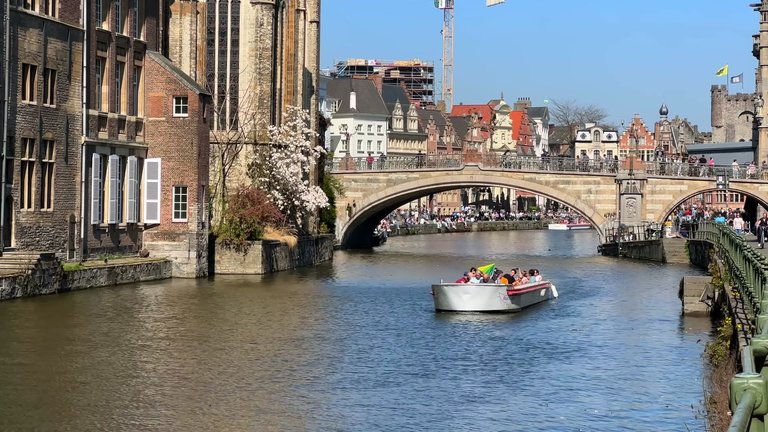
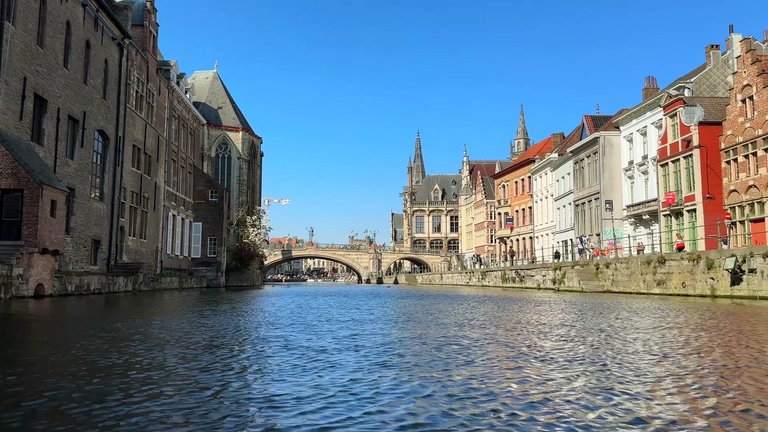
Look at this stunning facade. It looks absolutely amazing. This is actually a hostel. In fact, to be honest, it is the most extraordinary hostel in the world, Uppelink. The best thing about it is its location and history. Right across from it is the famous Graslei bank. Wooden beams from centuries ago, high ceilings, traditional windows. But it is quite expensive. I paid around fifty euros per night. In Antwerp, I rented a private apartment for the same price. Also, the door system is strange because it only works with a phone app. If you forget your phone in the room or the battery dies, you have to wait for help. And the most annoying part is that there are no lockers in the room or on the floor. This is really unusual and very inconvenient. But there is good news for tourists staying in Ghent. On the ground floor, there is a huge luggage storage area. By Belgian standards it is almost free.
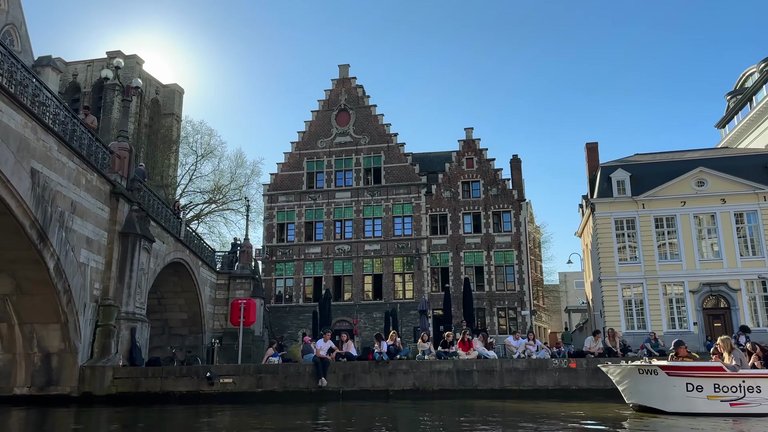
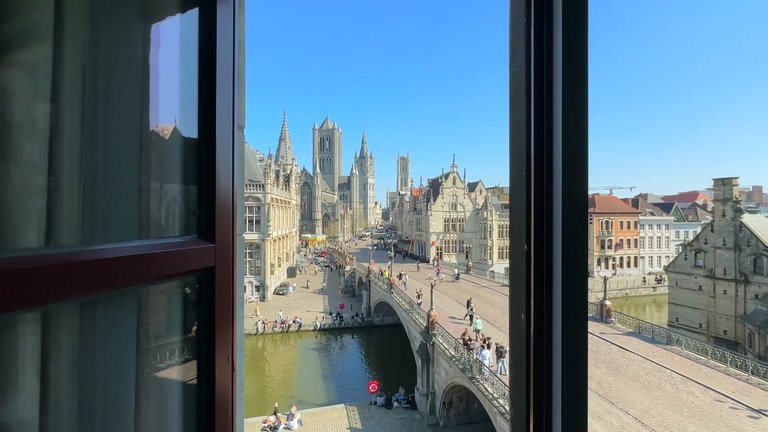
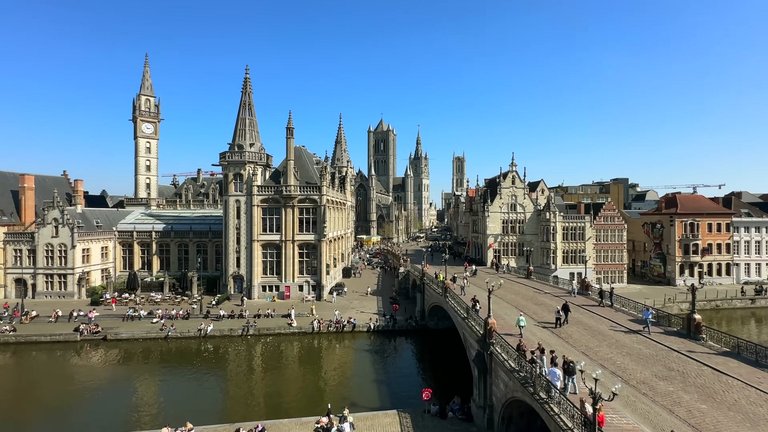

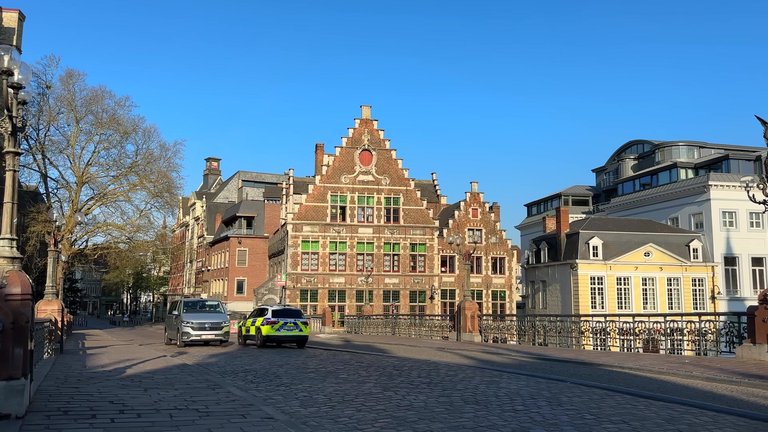
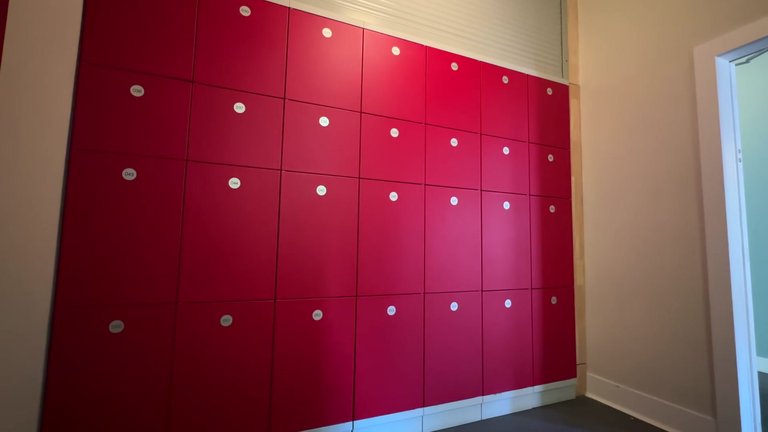
In the evenings this place is wonderful. Both tourists and locals enjoy the sunny days. But if you want to explore the city in peace and quiet, it is definitely worth staying here. If you only have a short time in Belgium and plan to stay just a few nights, I suggest starting with Bruges. Its streets are older and more authentic and the morning silence there is much more impressive. During the day Bruges is packed with tourists. To really feel the city, you should stay at least one night.
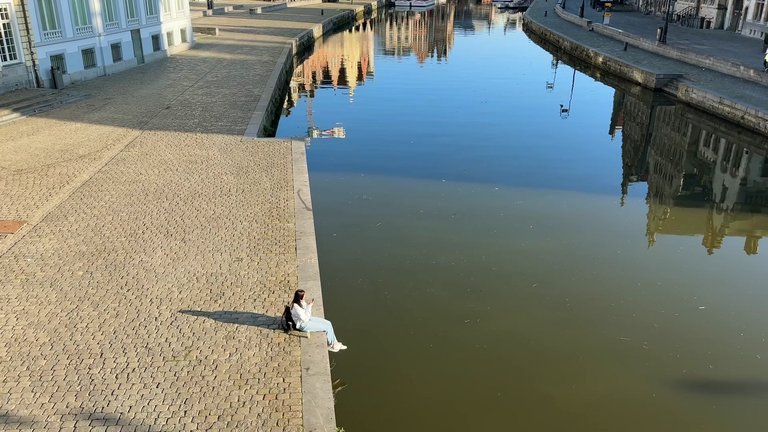
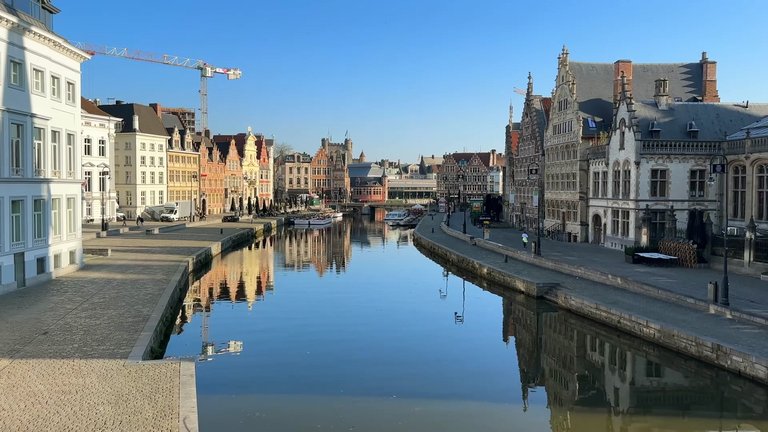
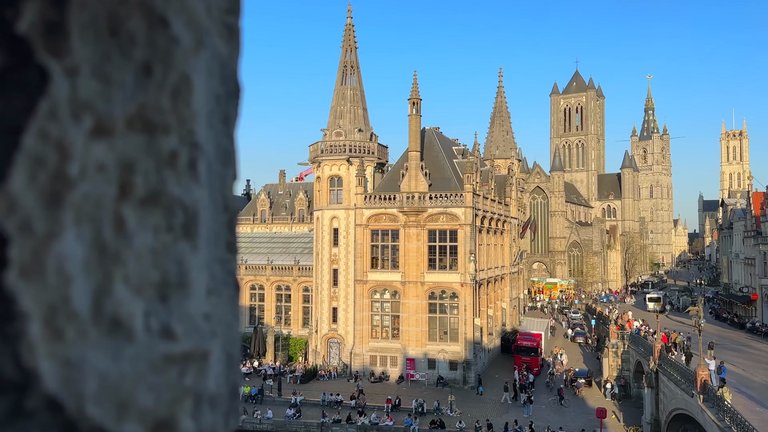
The best view of the city is from Saint Michael’s Bridge. I crossed it many times over three days and each time I could not resist taking photos. The views are really incredible.
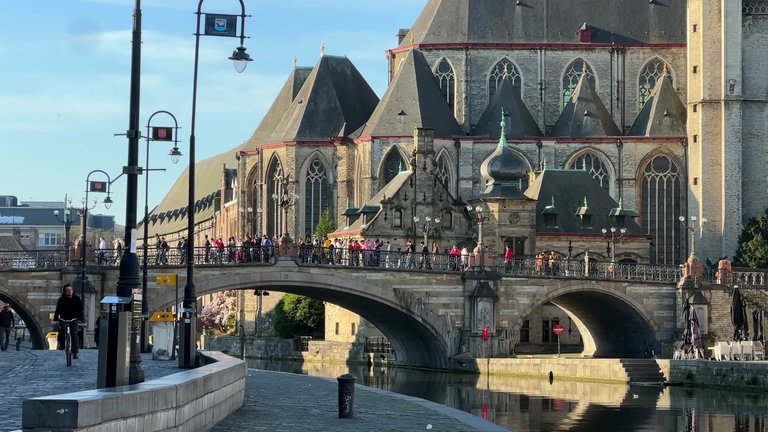
In front of us is Saint Nicholas Church. This is true Gothic architecture. Construction began in the tenth century. It was built in the Scheldt Gothic style, named after the river. The city and wealthy guilds supported the construction. At first the church tower was used as a lookout and the city bells were hung there. Until the tallest bell tower in Belgium, the Belfry, was built.

The Belfry is one of Ghent’s most important symbols. Construction began in 1313 and at the end of the fourteenth century, a gilded dragon was placed on top. For centuries, it served as a clock tower, a watchtower and a place where the city’s documents were stored. Where were these documents prepared Of course, in the city hall right next to it.
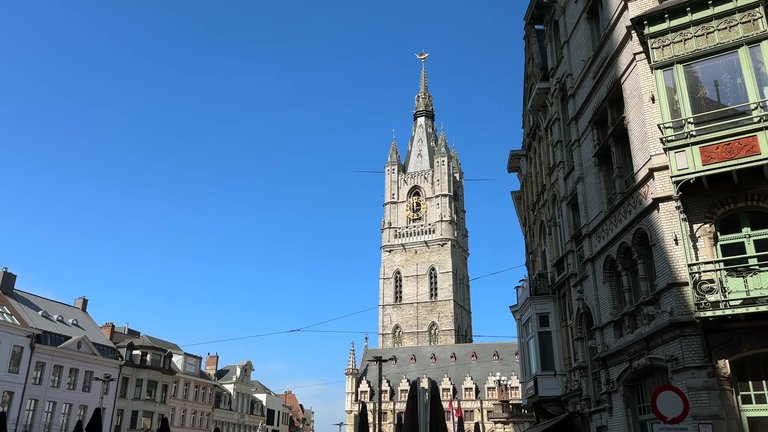
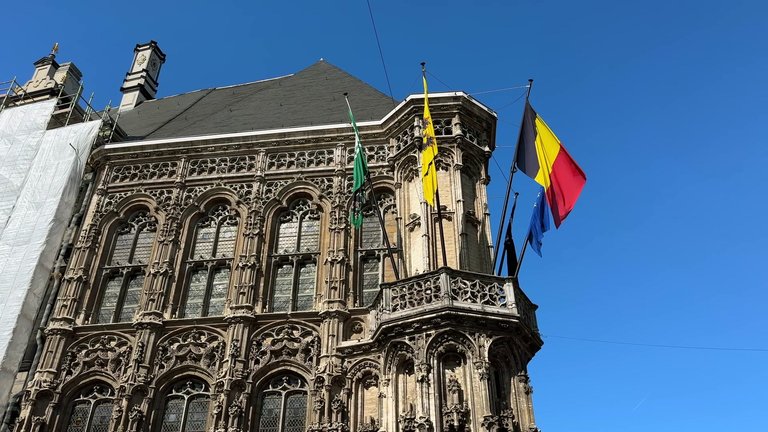
Unfortunately, when I visited, the building was covered with scaffolding and protective sheets. It is a shame because Ghent’s city hall is very interesting, both historically and architecturally. It was planned at the beginning of the fifteenth century as a small Gothic palace, but later they wanted to expand it. Since this happened during the Renaissance period, the project was extended in the Italian Renaissance style. The result is a mixed but very impressive building.
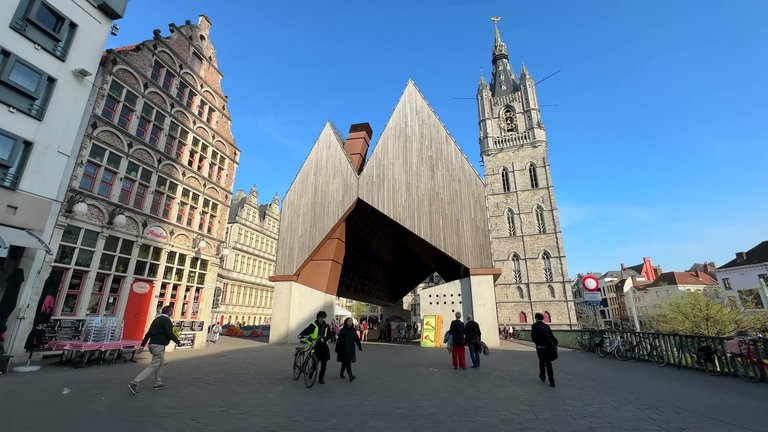
And believe it or not, we moved only two hundred meters from the Graslei and the hostel. Everything is so close here. After passing the Belfry, we reached a wonderful square with the Royal Flemish Theatre building. Although it looks historic, it was actually built at the end of the nineteenth century.
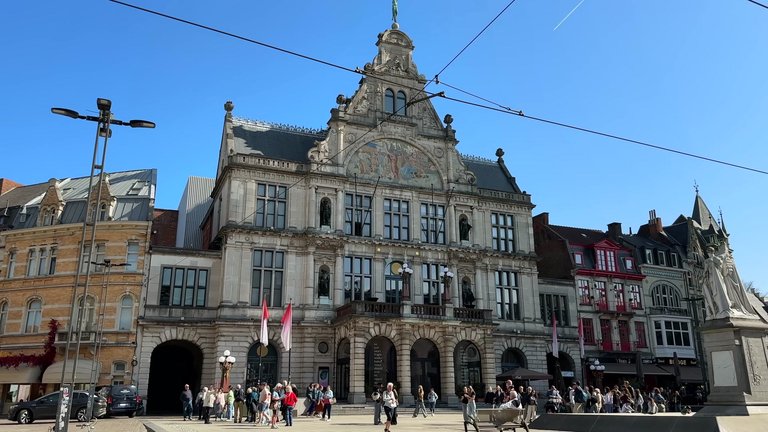
Right across from the Belfry stands the city’s most sacred place, the Cathedral. It is especially famous for the masterpiece The Adoration of the Mystic Lamb by the Flemish painters Hubert and Jan van Eyck. The cathedral was completed in its current form in 1569. It is a must-visit place when you are in Ghent.
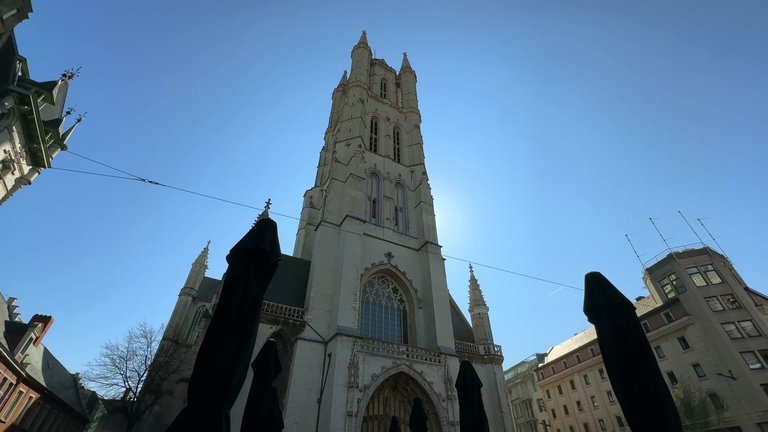
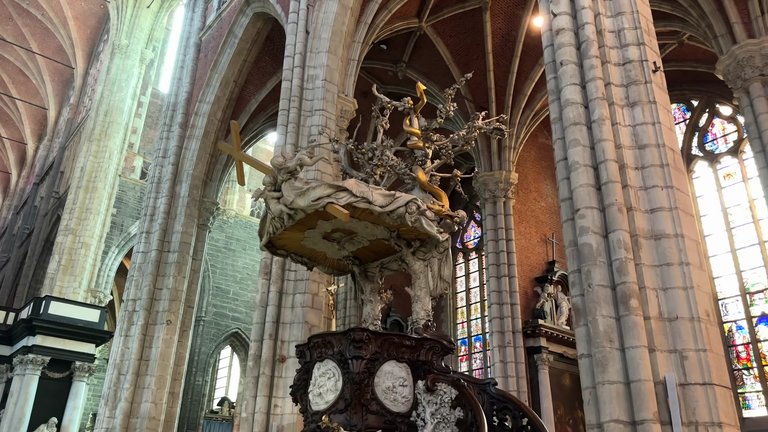
If you want to escape the crowd and the tourists while in the city center, visit the small courtyard right across from the cathedral. It is beautifully arranged and a lovely place. Its architecture, calm atmosphere and greenery are enchanting. You can sit in the shade or in the sun. And yes, it is also a bicycle parking area. In Ghent bicycles are used for both transportation and carrying goods. And they look so elegant.
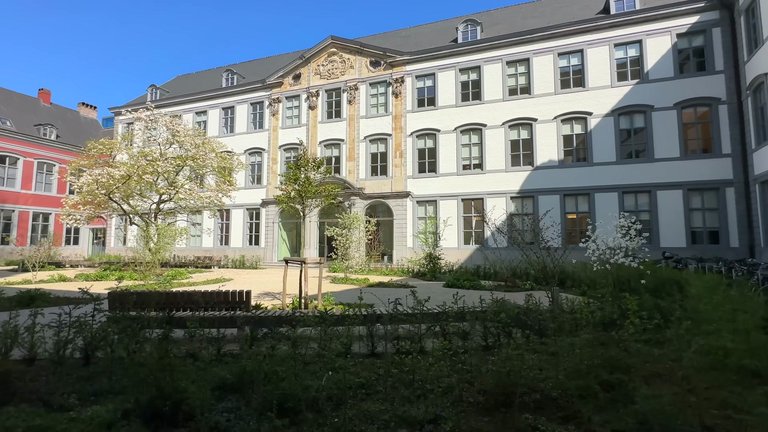
When I spoke with the locals, they said the buildings here had been restored not long ago. The offices behind and the historic Catholic seminary building are still used for educational purposes. Classes and seminars are still held here.
Then I visited the library. There is a trend in European cities to turn libraries into cultural centers. It is rare to see people reading books inside. Usually, they are using tablets or computers. But there are still some reading books. The building’s modern and futuristic design is impressive.
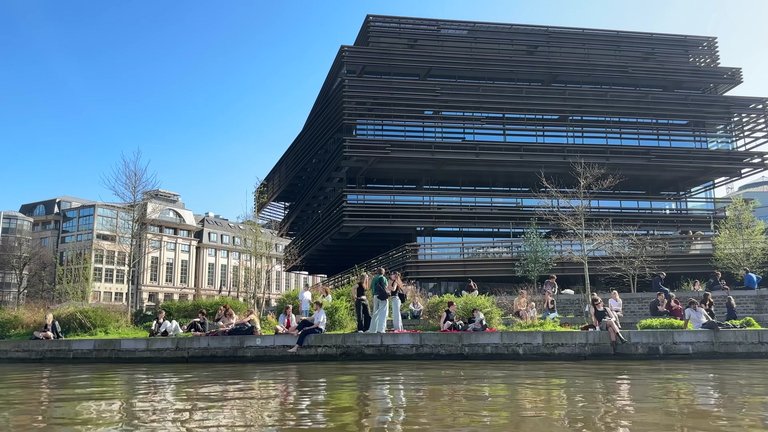
You cannot come to Ghent without trying beer, fries, fast food and a sweet waffle on top. It may sound terrible, but if you eat in moderation, it is fine. The place I visited had four kinds of soup, carrot, tomato, mushroom and spinach. I ordered seventy-five centiliters, a giant bowl. You can also get two smaller portions if you want. The price is six, eight, or ten euros. Very cheap for Belgium. The menu includes an apple, butter and bread. Really filling.
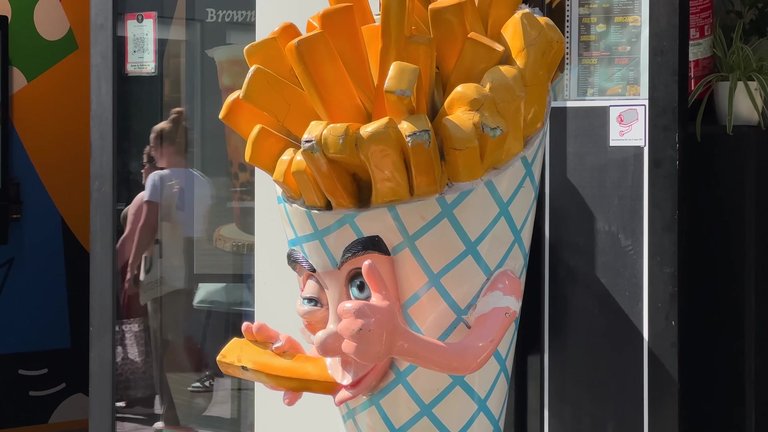
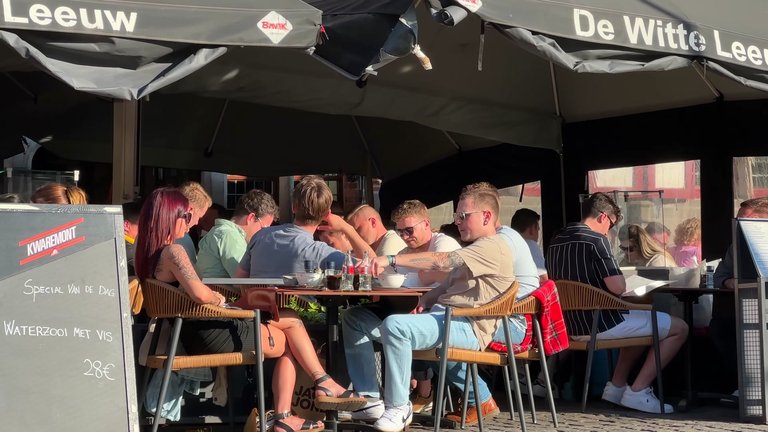
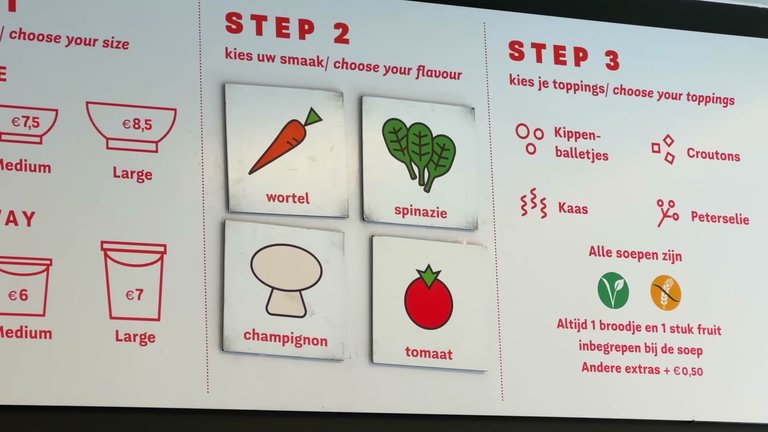
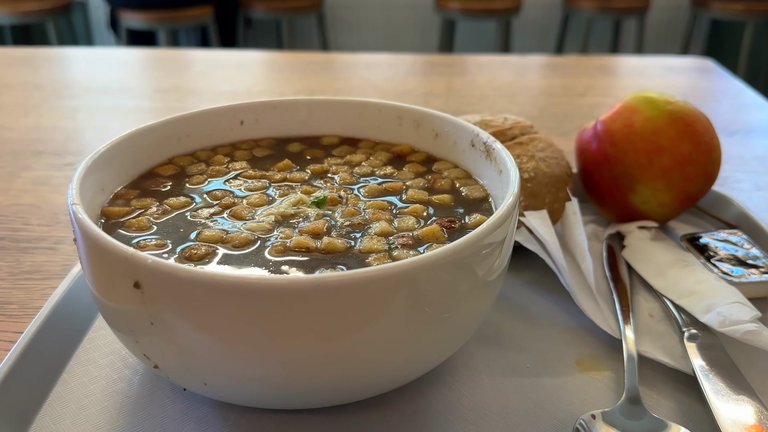
Ghent is known as the vegetarian capital of Europe. The city has the highest number of vegetarian restaurants per capita. Thursdays are officially declared meat-free days. Of course, it is not mandatory, but many people eat vegetables that day. So there is no shortage of vegetarian food in Ghent. For me, the best restaurant was the hostel because I could cook my own meals. I made my favorite pasta and prepared my drink. And there was no one in the kitchen, so I cooked in peace. Most importantly, I had my meal with the best view of the city. In a historic building, in such an atmosphere. What could be better And I saved money.
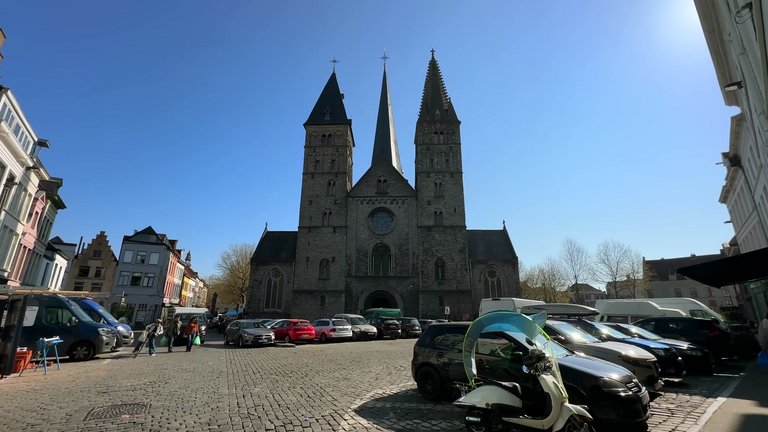
Next to one of Ghent’s oldest churches, Saint James Church, a flea market is held. Its Romanesque towers date back to the tenth century. Gothic additions were made in the fourteenth century. Baroque interior decorations were added in the fifteenth century. It underwent a full restoration a hundred years ago. Nearly a thousand years ago, a small church was built here, dedicated to Saint James, because this was one of the starting points of the Camino de Santiago.

While I was taking photos, a staff member approached me and told me that one of the church members had walked all the way from Ghent to Santiago, about two thousand kilometers. There is even a special pilgrimage route in Ghent. The most interesting thing about this church was that they offered me coffee there.
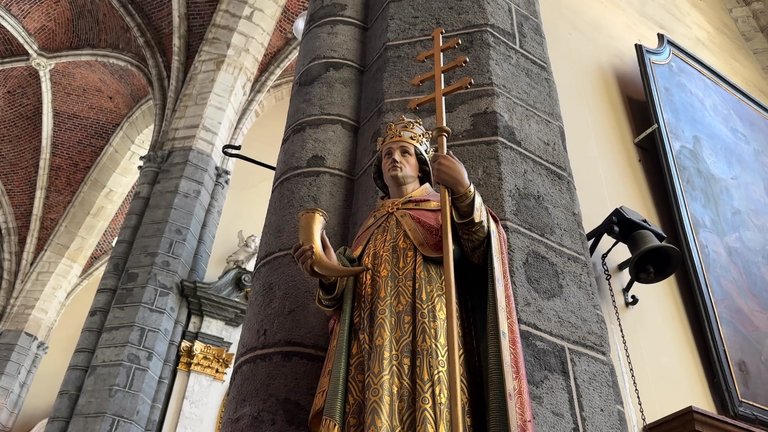
If you walk a bit north of the cathedral, you will find a small park and a museum that tells the story of local industry. It is in an old mill building. It presents industrial history across five floors. There are many other museums, churches, an opera house and charming neighborhoods in Ghent. Just like Bruges, it is a perfect city to get lost in and wander around, especially in the evening hours.
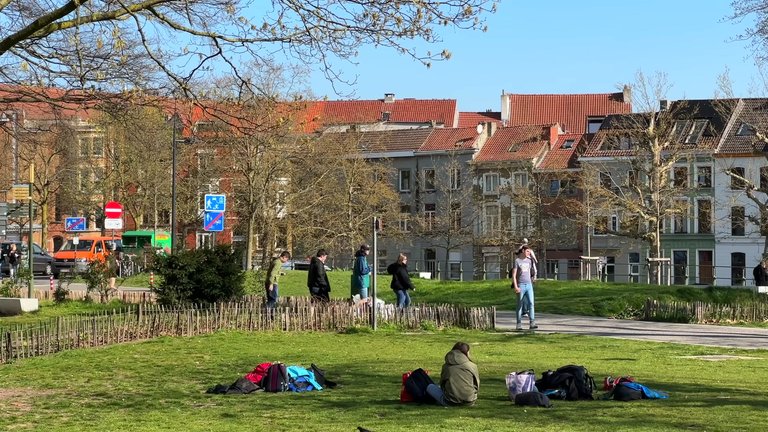
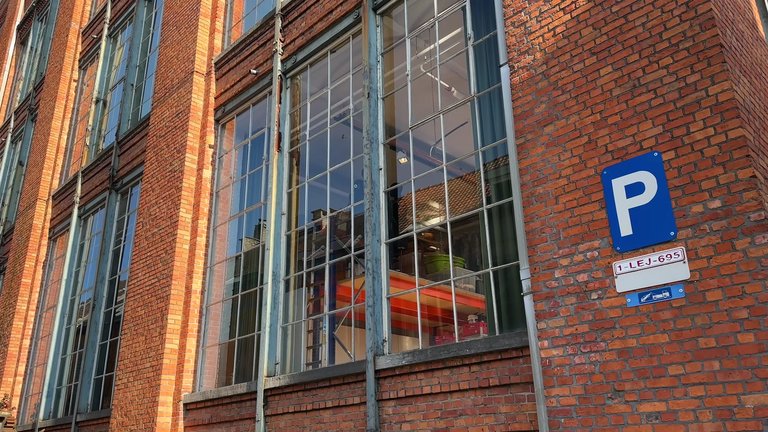
At night the city changes completely. The riverside where the hostel is located is, as always, full of people. Some are enjoying waffles, others wine. Bicycles are the constant part of the view. They are everywhere. The buildings in Ghent are beautifully lit at night. In the evenings, the city gains a whole new charm.
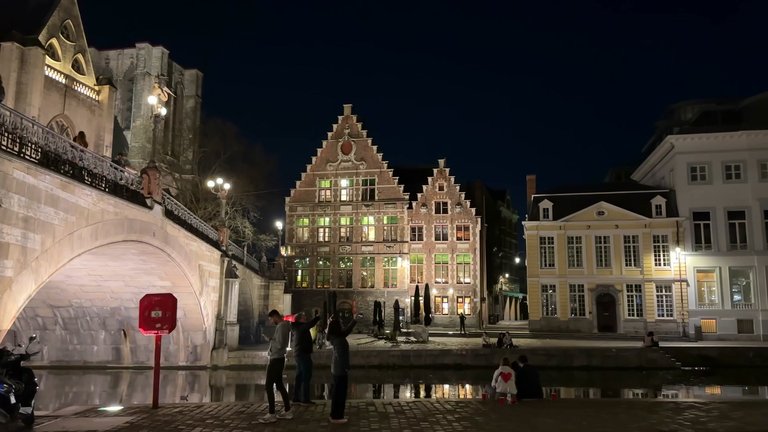
I did not like the Stadshal much during the day, but at night with the lighting, it looks really impressive. When you walk inside, the reflections of the light create a very nice effect. At least it is meaningful as a place to shelter from the rain because it rains often here. From the Stadshal, you can see the most important places in the city. In front of you is Saint Nicholas Church, to the right the Belfry, behind it the cathedral and on the left the city hall. So in a way, it makes sense.
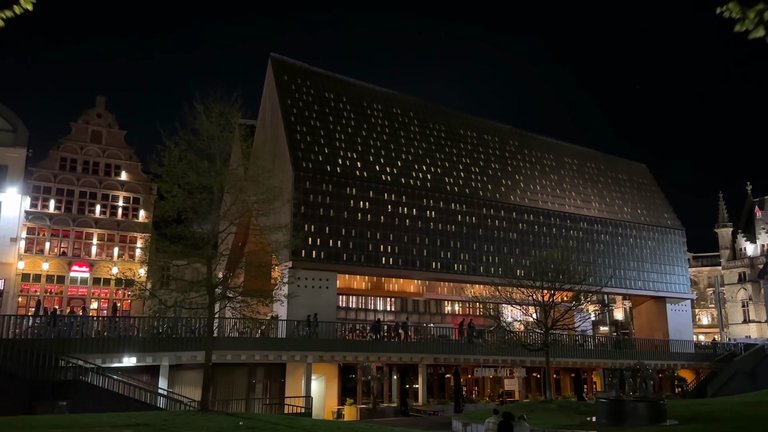
To sum up my visit to Ghent, this is an ideal city to discover Belgium. It does not have as many immigrants as Brussels or as many tourists as Bruges. The architecture is magnificent. Maybe its only real rival is Antwerp, but I will talk about that next time. See you soon.
